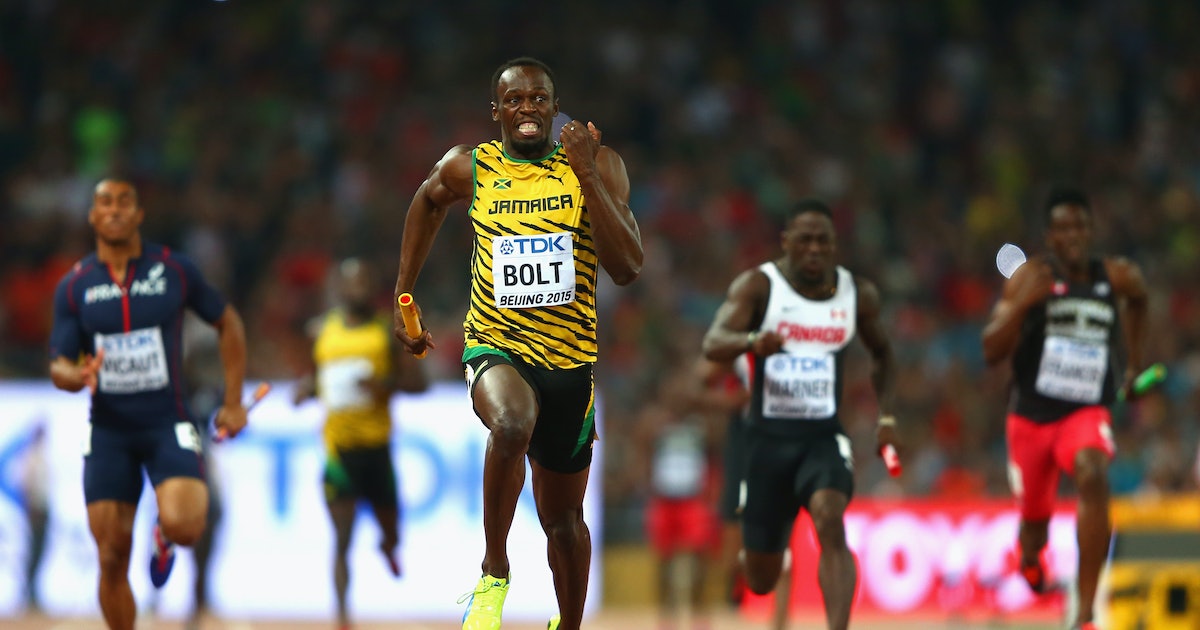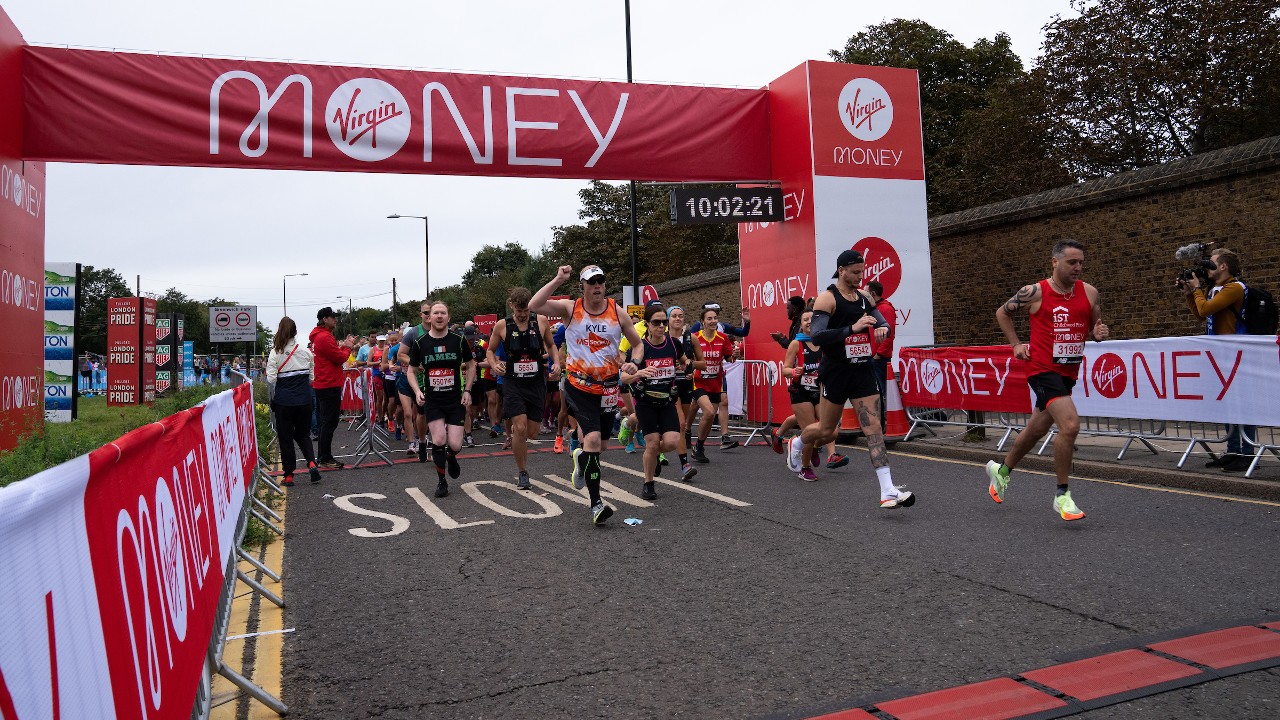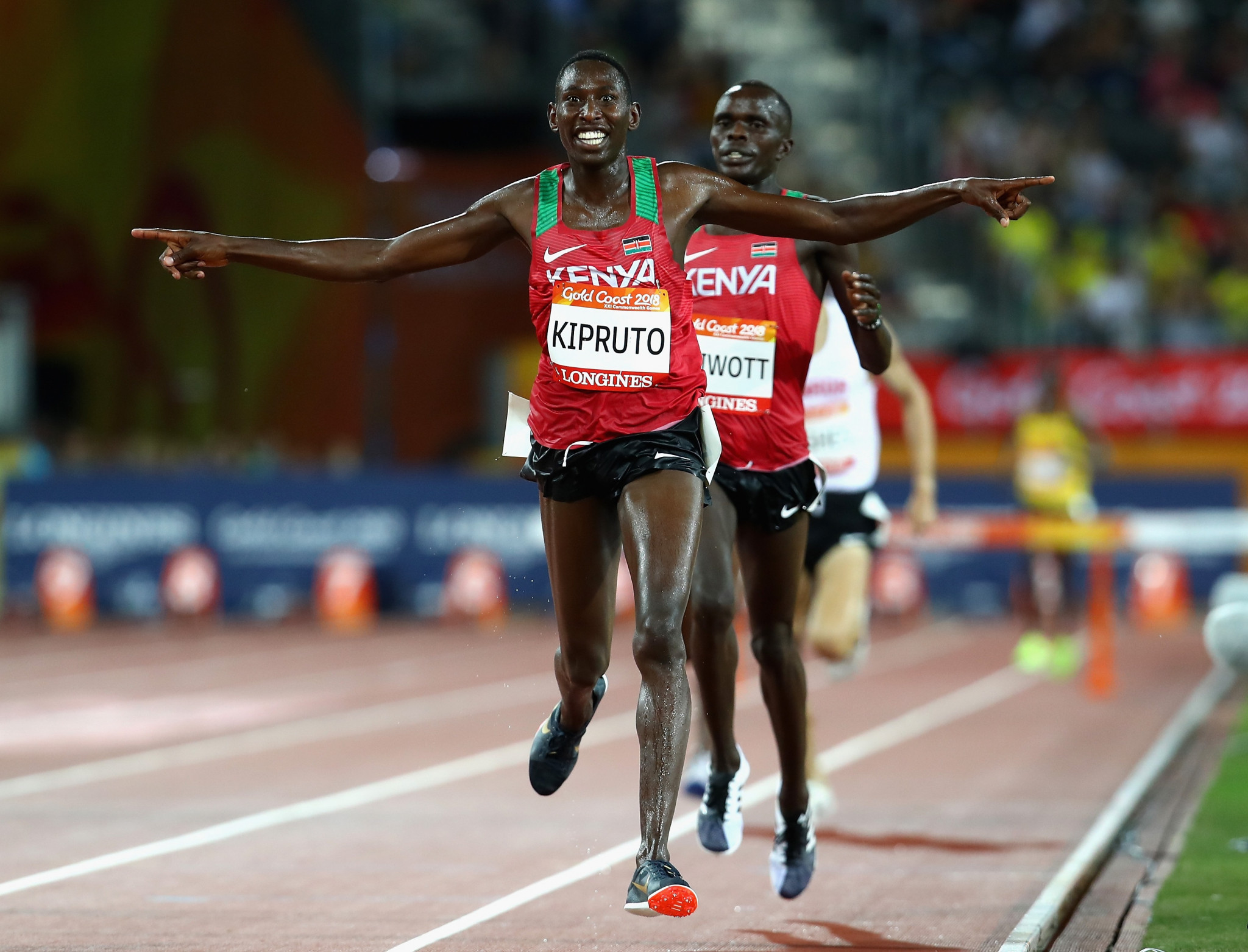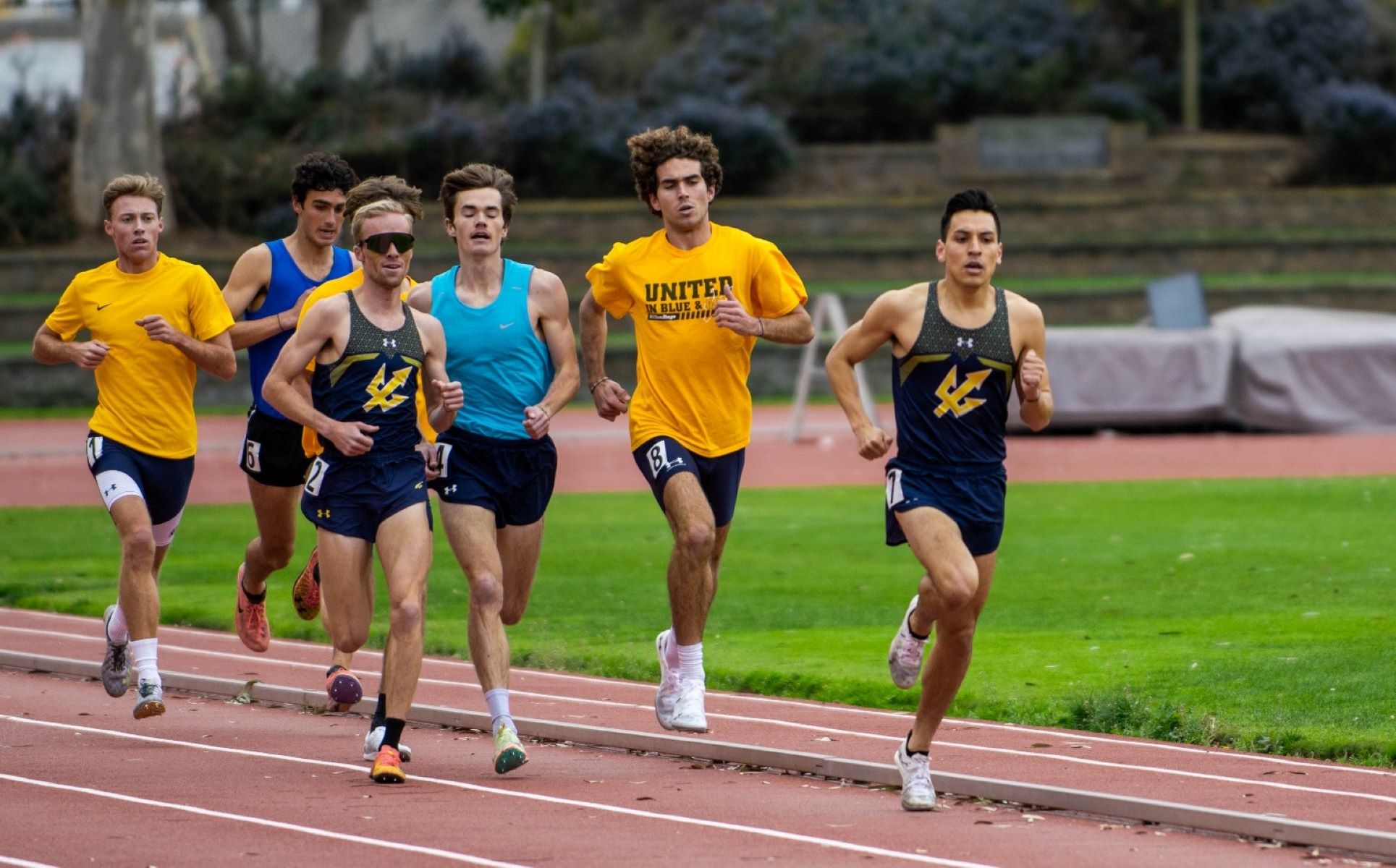Home>Misc>Featured>Why Do World Class Athletes Excel At Either Short And Long Distance Running


Featured
Why Do World Class Athletes Excel At Either Short And Long Distance Running
Modified: January 22, 2024
Discover the secrets behind the success of world class athletes in both short and long distance running. Gain insights from featured athletes and unlock your running potential.
Introduction
World-class athletes are often admired for their incredible athletic abilities, and nowhere is this more evident than in the realm of running. Whether it’s sprinters blazing across the track or marathoners persevering through grueling distances, these athletes seem to possess an innate talent for excelling in their respective disciplines. But why do some athletes excel at short distance running, while others shine in long distance events?
Understanding the physiology of short and long distance running provides valuable insights into this dichotomy. The demands placed on the body differ significantly between the two types of running, necessitating unique physiological adaptations. From muscle fiber types to energy systems utilized, there are several key factors that contribute to an athlete’s success in their chosen discipline.
Muscle fiber types play a crucial role in determining an individual’s running prowess. Sprinters, who excel in short distance running, tend to possess a higher proportion of fast-twitch muscle fibers. These fibers provide explosive power and generate force rapidly, enabling them to achieve incredible bursts of speed. In contrast, long distance runners possess a higher proportion of slow-twitch muscle fibers, which are more suited for endurance and fatigue resistance.
The energy systems utilized during short and long distance running also differ. Sprinters predominantly rely on the anaerobic system, which produces energy without the aid of oxygen but is limited in duration. This allows them to generate quick bursts of power but necessitates adequate rest and recovery. On the other hand, long distance runners primarily rely on the aerobic system, which utilizes oxygen to produce a sustained supply of energy, enabling them to endure extended periods of exertion.
Training methods also play a pivotal role in shaping an athlete’s capabilities. Sprinters focus on explosive speed and power, incorporating high-intensity interval training and plyometric exercises to improve their explosive strength and acceleration. In contrast, long distance runners prioritize endurance and stamina, engaging in prolonged, low-intensity aerobic training to enhance their cardiovascular capacity and improve their ability to sustain effort over extended periods.
Physiology of Short and Long Distance Running
The physiological demands placed on an athlete during short and long distance running are vastly different, leading to unique adaptations in their bodies. Understanding these physiological differences can shed light on why certain athletes excel in one discipline over the other.
One key factor that distinguishes short and long distance runners is their muscle fiber composition. Sprinters, specialized in short distance running, possess a higher proportion of fast-twitch muscle fibers. These fibers are responsible for generating quick, powerful contractions, making them well-suited for explosive bursts of speed. Fast-twitch fibers fatigue quickly, but their potency allows sprinters to maintain high velocities for short durations.
On the other hand, long distance runners have a higher proportion of slow-twitch muscle fibers. These fibers are characterized by their endurance and fatigue resistance, making them ideal for sustaining efforts over prolonged periods. Slow-twitch fibers provide a steady supply of energy and are more efficient at utilizing oxygen, which is crucial for endurance events such as marathons. While slow-twitch fibers do not generate as much force as fast-twitch fibers, their ability to maintain a lower intensity effort for extended durations makes them indispensable for long distance running.
Another important physiological aspect is the utilization of energy systems. Sprinters primarily rely on the anaerobic system to produce energy. This system does not require oxygen and is responsible for generating quick bursts of power. However, it is limited in duration due to the buildup of metabolic byproducts like lactic acid. As a result, sprinters require ample rest and recovery to replenish their energy stores before subsequent efforts.
In contrast, long distance runners primarily rely on the aerobic system, which utilizes oxygen to convert stored energy into usable fuel. The aerobic system is highly efficient in providing a sustained supply of energy, making it suitable for endurance events. Training at lower intensities improves the aerobic capacity of long distance runners, enabling them to efficiently utilize oxygen for energy production and sustain effort for extended periods without significant fatigue.
The cardiovascular system also undergoes adaptations specific to the demands of short and long distance running. Sprinters require explosive power and speed, which places greater demands on the heart and circulatory system during short and intense bursts of activity. Consequently, sprinters often have a larger heart, which pumps blood more forcefully and efficiently to the muscles.
On the other hand, long distance runners rely on cardiovascular adaptations to support sustained effort over extended periods. They often have a higher stroke volume, meaning their heart pumps a larger volume of blood with each beat. This allows for improved oxygen delivery to the muscles and greater endurance. Additionally, long distance runners tend to have a higher capillary density in their muscles, facilitating the efficient exchange of oxygen and waste products during prolonged exercise.
Muscle Fiber Types and Distribution
The distribution of muscle fiber types plays a critical role in an athlete’s ability to excel in either short or long distance running. Understanding these muscle fiber types and their distribution can provide insights into why certain athletes are better suited for specific running disciplines.
There are two main types of muscle fibers: fast-twitch (Type II) and slow-twitch (Type I). Fast-twitch fibers are responsible for generating quick and powerful contractions, while slow-twitch fibers are more suited for endurance and fatigue resistance.
Sprinters, who excel in short distance running, tend to possess a higher proportion of fast-twitch muscle fibers. These fibers provide the explosive power necessary for quick acceleration and rapid movements. Fast-twitch fibers fatigue quickly but are capable of generating high levels of force in a short period of time. This allows sprinters to achieve impressive bursts of speed during short sprints.
In contrast, long distance runners have a higher proportion of slow-twitch muscle fibers. These fibers are more resistant to fatigue and can sustain contractions over prolonged periods. Slow-twitch fibers are highly efficient at utilizing oxygen, making them ideal for endurance events. This enables long distance runners to maintain a steady pace and exert effort for extended durations without succumbing to fatigue.
The distribution of muscle fiber types can vary between individuals and can be influenced by various factors, including genetics and training. While fast-twitch fibers are more dominant in sprinters, it is important to note that even within this population, the distribution can vary. Some sprinters may have a higher proportion of fast-twitch fibers, while others may have a more balanced distribution.
Conversely, long distance runners may have a higher proportion of slow-twitch fibers, but individual variations exist within this group as well. Training methods and adaptations can also influence the distribution of muscle fiber types, with endurance training promoting an increase in slow-twitch fibers and strength and power training favoring fast-twitch fiber development.
It is important to recognize that while muscle fiber distribution can provide a general understanding of an athlete’s predisposition to excel in specific running disciplines, it is not the sole determinant of success. Factors such as training, technique, mental fortitude, and overall fitness also play crucial roles in determining an athlete’s performance.
Energy Systems Utilized
The utilization of different energy systems is a key factor that distinguishes short and long distance running. Understanding these energy systems provides valuable insights into the physiological demands of each discipline and why athletes excel in their respective events.
Sprinters, specializing in short distance running, primarily rely on the anaerobic energy system. This system produces energy without the need for oxygen and is characterized by the rapid breakdown of stored ATP (adenosine triphosphate) for immediate energy. During sprinting, the fast-twitch muscle fibers predominantly utilize this system to generate quick and powerful contractions. However, the anaerobic system has a limited capacity and can only sustain high-intensity efforts for a short duration. As a result, sprinters require substantial rest and recovery between bursts of exertion to replenish ATP stores.
On the other hand, long distance runners primarily rely on the aerobic energy system. This system utilizes oxygen to convert stored carbohydrates and fats into ATP, providing a sustained supply of energy for prolonged exercise. The aerobic system is highly efficient and can produce energy for hours, making it essential for endurance events. Long distance runners develop the ability to efficiently utilize oxygen, enabling them to maintain a steady pace for extended periods without significant fatigue.
Different energy systems come into play at various intensities and durations of exercise. For sprinters, the anaerobic system dominates during short, intense bursts of activity. As the duration of effort increases, the aerobic energy system starts to contribute to energy production. Conversely, long distance runners primarily rely on the aerobic system throughout their races, with limited involvement of the anaerobic system.
It is worth noting that despite the predominant utilization of specific energy systems, there is some overlap between the two disciplines. Sprinters, for instance, still rely on aerobic metabolism to some extent, especially during recovery phases between sprints. Similarly, long distance runners may tap into their anaerobic system during intense sprint finishes or during challenging hill climbs.
The ability to effectively utilize energy systems is influenced by an athlete’s training and conditioning. Sprinters focus on explosive power and speed development through high-intensity interval training and resistance exercises. This type of training enhances the anaerobic capacity and the efficiency of the anaerobic energy system. In contrast, long distance runners prioritize aerobic endurance training, engaging in prolonged, low to moderate intensity runs to improve their cardiovascular capacity and the efficiency of the aerobic energy system.
Overall, the utilization of different energy systems is a critical aspect that dictates the performance of athletes in short and long distance running. Understanding these energy systems provides valuable insights into an athlete’s capacity to generate energy and sustain effort over the course of their respective events.
Training Methods for Short and Long Distance Running
The training methods employed for short and long distance running differ significantly, reflecting the specific physiological demands of each discipline. Understanding these training methods provides valuable insights into how athletes develop the necessary skills and endurance to excel in their respective events.
For short distance running, such as sprinting, training focuses on developing explosive power and speed. High-intensity interval training (HIIT) plays a crucial role in sprinters’ training regimens. HIIT involves short bursts of maximal effort followed by periods of active recovery. This type of training helps improve anaerobic capacity and the ability to generate quick, powerful contractions. Sprinters also incorporate resistance training, such as weightlifting and plyometric exercises, to further enhance their explosive strength and acceleration.
In contrast, long distance runners prioritize endurance training to improve their cardiovascular capacity and the efficiency of their aerobic energy system. The foundation of their training consists of prolonged, low-intensity runs at a steady pace. This type of training helps build the aerobic base and improves the body’s capacity to utilize oxygen for energy production. Long distance runners often incorporate long runs, tempo runs, and interval workouts into their training plans to target specific aspects of endurance and pace.
In addition to endurance training, long distance runners may include strength training exercises to enhance overall muscular strength and stability. This can improve running economy and reduce the risk of injury. Strength training for distance runners typically involves exercises that target core stability, hip and glute strength, and leg muscles. These exercises can be performed with bodyweight, free weights, or resistance bands.
Cross-training is also commonly incorporated into the training routines of both short and long distance runners. Cross-training activities, such as cycling, swimming, or rowing, provide a break from the repetitive impact of running while allowing for additional cardiovascular conditioning. These activities can help maintain fitness levels and provide additional training stimulus without placing excessive strain on the body.
It is worth noting that the duration and intensity of training sessions can vary for both short and long distance runners, depending on an athlete’s fitness level, goals, and competition schedule. Proper rest and recovery are essential components of training for both disciplines, allowing the body to adapt and improve. Adequate rest periods, sleep, and nutrition are crucial for optimizing performance and reducing the risk of overtraining and injuries.
Overall, training methods for short and long distance running focus on the specific physiological demands of each discipline. While sprinters emphasize explosive power and speed, long distance runners prioritize endurance and aerobic capacity. Incorporating a balanced combination of training methods, including endurance running, strength training, cross-training, and appropriate rest, is key to achieving optimal performance in both short and long distance running.
Speed vs Endurance Training
Speed and endurance are two essential components of running performance, and training methods for these attributes vary to meet the specific demands of each discipline. Understanding the differences between speed and endurance training provides valuable insights into how athletes develop the necessary skills to excel in their respective events.
Speed training primarily focuses on improving an athlete’s ability to generate explosive power and maintain high velocities over short distances. It involves short, intense bursts of running at maximal or near-maximal effort. Sprinters often utilize various speed training techniques, such as interval training and sprint drills, to enhance their acceleration, top-end speed, and overall running mechanics. These training methods target the development of fast-twitch muscle fibers, which generate quick, powerful contractions necessary for sprinting.
In contrast, endurance training prioritizes the development of an athlete’s ability to sustain effort over extended periods. Long distance runners engage in aerobic training to strengthen their cardiovascular system and increase their endurance capacity. This type of training consists of prolonged, low-intensity runs at a sustainable pace. Long distance runners gradually increase their mileage and incorporate tempo runs and interval workouts to push their lactate threshold and improve their ability to maintain a steady pace over long distances.
While speed training emphasizes short, intense efforts, endurance training requires longer, sustained efforts. Speed training activates the anaerobic energy system, which relies on stored ATP for immediate energy, while endurance training focuses on the aerobic energy system, which utilizes oxygen to produce energy for extended duration. Developing speed requires explosive power and strength, whereas endurance training emphasizes stamina, fatigue resistance, and efficient oxygen utilization.
It’s important to note that there is some overlap between speed and endurance training. Sprinters, despite their focus on speed, still incorporate endurance training to optimize recovery between sprints and to maintain overall fitness. Similarly, long distance runners may include speed workouts to improve their stride efficiency and develop their fast-twitch muscle fibers, which can provide an extra kick during challenging race situations.
Properly balancing speed and endurance training is a crucial aspect of an athlete’s overall training plan. Sprinters benefit from some level of endurance training to increase their overall fitness and improve their anaerobic recovery capabilities. Long distance runners benefit from incorporating speed workouts to improve their running economy, enhance their finishing kick, and add variety to their training regime.
Ultimately, the amount of speed versus endurance training an athlete incorporates depends on their specific event, goals, and individual strengths and weaknesses. Coaches and athletes must tailor training plans to suit the demands of the chosen discipline while considering the athlete’s abilities and physiological response to training stimulus.
Genetic Factors and Talent
When it comes to excelling in short or long distance running, genetic factors and innate talent play a significant role in an athlete’s potential for success. Certain genetic traits can contribute to the development of physiological and biomechanical advantages, which can give athletes a natural predisposition for their respective disciplines.
One genetic factor that influences running performance is muscle fiber composition. The distribution of fast-twitch and slow-twitch muscle fibers is determined partly by genetics. Sprinters tend to have a higher proportion of fast-twitch fibers, which provide explosive power and quick contraction times. On the other hand, long distance runners tend to have a higher proportion of slow-twitch fibers, which are more suited for endurance and fatigue resistance. While training can influence the development and adaptation of muscle fibers, genetic predispositions can provide a head start in optimizing performance.
Another genetic factor that influences running performance is VO2 max, or maximal oxygen uptake. VO2 max refers to the body’s ability to utilize oxygen during exercise. It is influenced by factors such as lung capacity, cardiac output, and the efficiency of oxygen transport in the blood. Some individuals have a higher natural VO2 max, which gives them the ability to take in more oxygen and deliver it to the muscles efficiently. Higher VO2 max levels are often associated with success in endurance events, such as long distance running.
Biomechanical factors can also be influenced by genetics and contribute to an athlete’s running talent. Factors such as leg length, stride length, running economy, and joint mobility can all impact an athlete’s performance. For example, sprinters often have longer limbs and more explosive stride lengths, allowing them to cover ground quickly. Long distance runners often have shorter, more efficient strides that maximize their energy expenditure over extended periods. These biomechanical advantages can be influenced by genetics and contribute to an athlete’s potential for success in their chosen discipline.
While genetic factors provide a starting point, talent alone does not guarantee success in running. Hard work, dedication, and proper training are essential for athletes to reach their full potential. Even individuals with genetic advantages must still put in the effort to develop their skills, improve their techniques, and enhance their overall fitness levels.
It’s important to recognize that athletic success is not solely determined by genetics. Factors such as mental resilience, discipline, and a strong work ethic can also contribute significantly to an athlete’s performance. The combination of genetic factors and the development of key skills through training and experience ultimately determines an athlete’s success in short or long distance running.
Psychological and Mental Factors
While physical attributes and training methods are crucial for success in running, it is important not to overlook the significance of psychological and mental factors. The mindset and mental fortitude of athletes play a critical role in their ability to excel in short or long distance running.
One key psychological factor is motivation. The drive to succeed, set goals, and push oneself to the limits is essential for athletes in both disciplines. Sprinters must cultivate a competitive mindset, constantly seeking to improve their personal bests and outperform their opponents. Long distance runners, on the other hand, rely on intrinsic motivation to embrace the mental and physical challenges of enduring extended periods of running. Motivation provides the mental fuel to keep athletes focused, disciplined, and driven to achieve their goals.
Mental toughness is another important factor in running performance. Both sprinters and long distance runners face mental and physical obstacles during their events. Sprinters need to overcome the pressure of intense competition and maintain focus on executing precise movements with split-second timing. Long distance runners must endure physical discomfort, fatigue, and mental fatigue over extended periods of running. Developing mental toughness enables athletes to push through these challenges, stay resilient in the face of adversity, and maintain a strong focus on their performance.
Concentration and focus are crucial for success in both disciplines. Sprinters require a high level of concentration to execute explosive starts, maintain proper form through each stride, and react swiftly to starting signals. Long distance runners need to maintain concentration over extended periods, pacing themselves and staying mentally engaged throughout their events. Maintaining focus allows athletes to make quick decisions, adapt to race dynamics, and maximize their performance.
Visualization and mental imagery techniques also play a vital role in the success of runners. By visualizing their race strategies, sprinters can mentally rehearse each movement, improve their technique, and enhance their confidence. Long distance runners use visualization to imagine themselves maintaining a strong pace, staying relaxed, and overcoming fatigue during their races. Mental imagery helps create a positive mindset and reinforces a sense of preparedness for the physical challenges ahead.
Finally, sports psychology and the support of mental health professionals can greatly benefit runners. Techniques such as goal setting, positive self-talk, stress management, and visualization exercises can be utilized to optimize athletes’ mental well-being and performance. Moreover, effective coping strategies for dealing with setbacks, injuries, and performance pressures are essential for maintaining a healthy and resilient mindset.
It is important for athletes to prioritize mental training alongside physical training, as it can provide the competitive edge needed to excel in short or long distance running. Being mentally prepared, motivated, and focused can make a significant difference in an athlete’s performance and overall success.
Conclusion
The world of running is diverse, with athletes excelling in either short or long distance events. Understanding the physiological, training, and mental factors that contribute to success in each discipline provides valuable insights into why some athletes thrive in sprinting while others excel in endurance running.
Physiological factors, such as muscle fiber types and energy system utilization, play a significant role in determining an athlete’s prowess in either short or long distance running. The distribution of fast-twitch and slow-twitch muscle fibers, as well as the reliance on anaerobic or aerobic energy systems, influences an athlete’s ability to generate power and sustain effort over different durations.
Training methods tailored to each discipline further enhance an athlete’s performance. Speed training and explosive power development are critical for sprinters, while endurance training and aerobic conditioning are paramount for long distance runners. Incorporating a balanced combination of intensive speed workouts, endurance runs, strength training, and cross-training activities is essential for athletes to maximize their potential.
The role of genetics and natural talent cannot be overlooked. Genetic factors such as muscle fiber composition, high VO2 max, and biomechanical advantages can provide athletes with innate strengths in their chosen discipline. However, it is important to remember that hard work, dedication, and proper training are still essential for athletes to reach their full potential.
Furthermore, psychological and mental factors play a crucial role in running performance. Motivation, mental toughness, concentration, visualization, and support from sports psychology professionals can greatly enhance an athlete’s mental preparedness and overall success. Training not only the body but also the mind is crucial for athletes to stay focused, resilient, and motivated throughout their competitive journey.
In conclusion, excelling in either short or long distance running requires an intricate combination of physiological, training, and mental factors. While athletes may naturally gravitate towards a particular discipline due to their genetic predispositions, success is ultimately determined by a holistic approach to training, a competitive mindset, mental resilience, and a passion for the sport. Regardless of the chosen distance, a commitment to consistent training, learning, and growth will empower athletes to achieve their goals and surpass their own limitations in the world of running.









